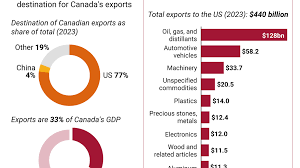
Introduction
The imposition of tariffs during Donald Trump’s presidency remains a critical topic in international trade discussions. These tariffs, particularly those affecting Canada, have had significant implications for both economies. Understanding the tariffs, their impacts, and the evolving trade relationship is essential for businesses and policymakers alike.
The Facts Behind Trump Tariffs
In 2018, President Trump announced steep tariffs on steel and aluminum imports, claiming they were necessary for national security reasons. Canada, a significant trade partner, was hit hard by these policies, as well as additional tariffs on various goods including dairy products and lumber. The steel and aluminum tariffs began at 25% and 10%, respectively, leading to various countermeasures from Canada.
Canada’s Response
In retaliation, Canada imposed tariffs on a range of American products worth around $16.6 billion, targeting iconic items such as bourbon and peanut butter. This tit-for-tat created tensions and uncertainty in the trade landscape as both countries navigated the tariffs. The Canadian government aimed to support domestic industries affected by the Trump tariffs through compensatory measures, while also seeking to ease the burden on Canadian consumers and businesses.
Consequences for Trade Relations
The tariffs strained the historically strong trade relationship between the two neighboring countries. Canada felt the economic impact as many industries that relied on U.S. markets dealt with increased costs and reduced competitiveness. However, the tariffs paved the way for renegotiation of the North American Free Trade Agreement (NAFTA), culminating in the United States-Mexico-Canada Agreement (USMCA) in 2020, which included provisions addressing some of the tariff-related issues.
The Future of Tariff Policies
As the United States approaches another electoral cycle, the future of tariff policies remains uncertain. Discussions have surfaced regarding the easing or lifting of some tariffs, as businesses on both sides continue to advocate for a resolution to trade tensions. Analysts predict that the Biden administration may adopt a more conciliatory approach, focusing on strengthening relationships rather than imposing new tariffs.
Conclusion
The Trump tariffs have had profound and lasting effects on Canada and trade relations overall. While certain tariffs are in place, ongoing discussions hint at potential changes. For businesses and consumers in Canada, understanding these dynamics is crucial as they adapt to an evolving economic landscape. The path forward will likely be influenced by political shifts and the need for collaboration in nurturing trade ties between the U.S. and Canada.



